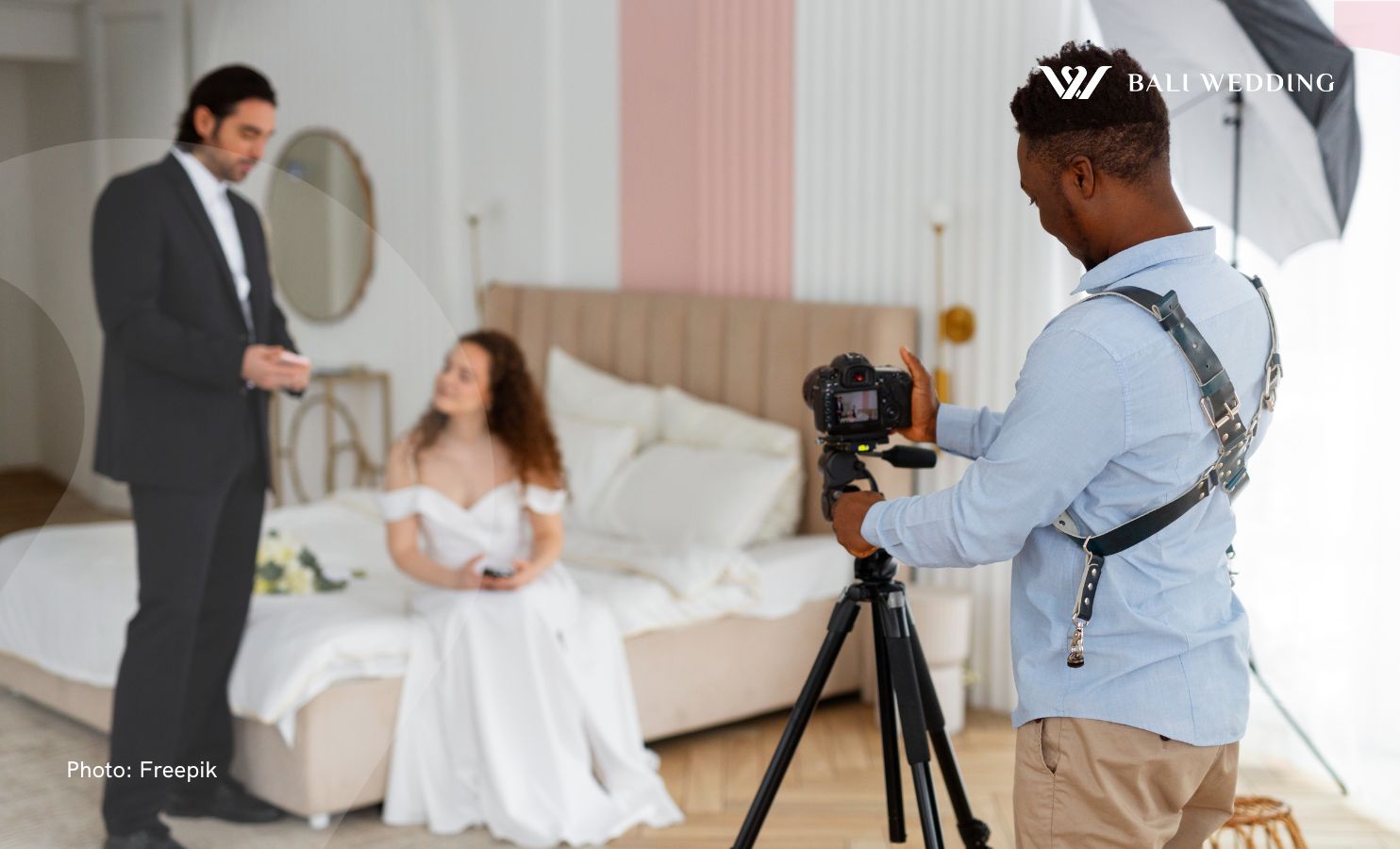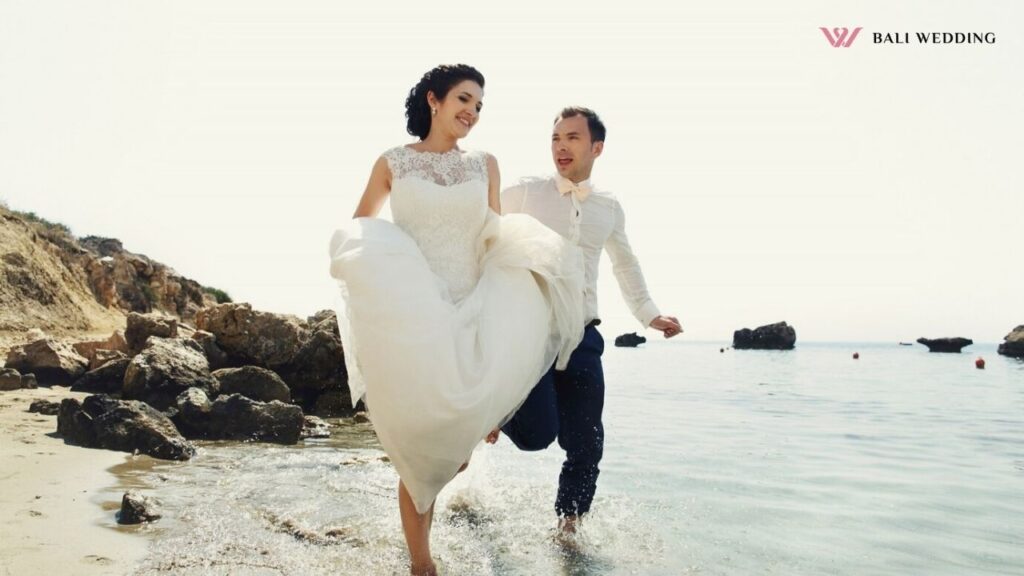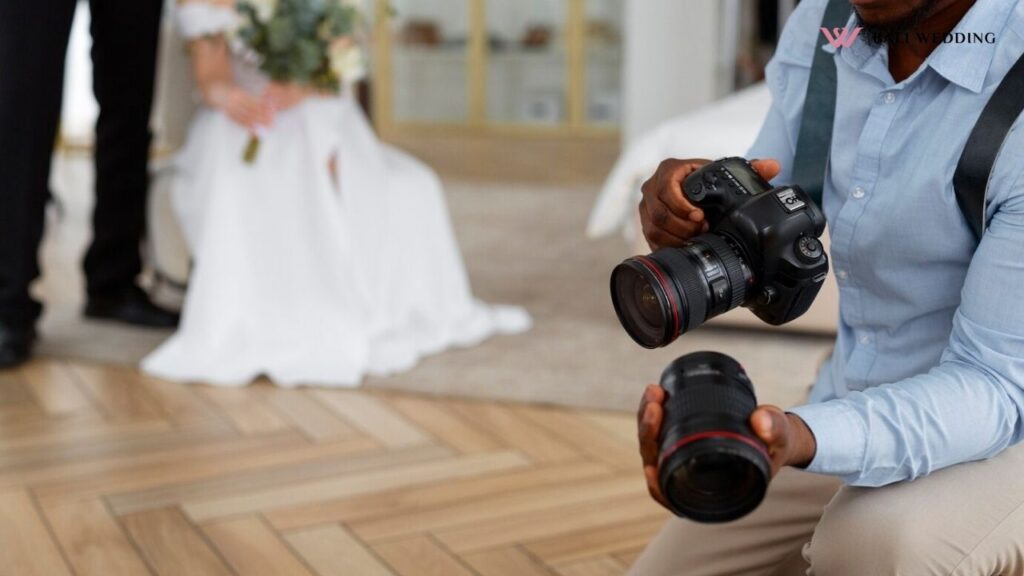December 12, 2023 • 7min read
How to Capture a Wedding by Yourself

A wedding usually consists of multiple photographers to ensure all parts of the events are covered and well documented. As a new photographer, we know you may need a team or assistant to cover you. But is it possible to only have one photographer? Are you planning to capture a wedding event alone?
Here, we’ll go through everything you need about shooting a wedding yourself.
The Challenges of Shooting a Wedding Solo
One of the biggest challenges of solo wedding photography is the need to multitask effectively. A wedding day is a whirlwind of events, from capturing the bride getting ready to the emotional ceremony and lively reception. As the sole photographer, you must seamlessly switch between roles, sometimes juggling multiple cameras, lenses, and lighting equipment to capture every important moment.
With no second photographer or assistant to rely on, there’s a heightened risk of missing critical shots. This includes not only the planned moments but also spontaneous, fleeting expressions and interactions that can be incredibly meaningful to the couple. Let’s look at all the things you need to be aware of when capturing a wedding alone.
Manage Your Tasks
As a solo wedding photographer, effectively dividing your tasks and responsibilities is essential to ensure you capture the day’s moments seamlessly and professionally.
Looking for Professional Wedding Photography?
"(Required)" indicates required fields
"(Required)" indicates required fields
Before the wedding day, you’ll need to communicate with the couple to understand their preferences, create a detailed shot list, and develop a timeline for the day. This includes planning for equipment and backup gear and scouting the venue if possible.
During the wedding day, start by setting up your equipment. Ensure that your cameras are cleaned and properly configured with the right settings for different lighting conditions. Check that all your lenses are clean and ready for use. Also, ensure that your lighting gear is in working order.
Time Management
Once you know the list of tasks you need to do, it’s important to be efficient with your time. Time management requires meticulous planning, adaptability, and staying organized throughout the day.
Start the day on the morning of the wedding by carefully reviewing the detailed timeline you’ve created. This timeline outlines the entire schedule of events, from the bride and groom getting ready to the reception festivities.
On the wedding day, you must adhere to the timeline, which involves arriving at the venue well in advance to set up equipment, test lighting, and prepare for the day’s first shots. During the getting ready phase, you must allocate sufficient time for candid moments and details, such as the bride’s dress and the groom’s preparations.
As the day progresses, you must proactively transition between different wedding segments, from the ceremony to formal portraits and the reception. Remember to anticipate special moments, adjust camera settings quickly, and be prepared to capture the unexpected.
Flexibility is also crucial in time management, as weddings rarely go entirely according to plan. Delays, last-minute changes, or extended speeches can throw off the schedule, and you must adapt while still ensuring that no essential shots are missed.
Dealing with Lighting Challenges
Wedding venues can present a wide range of lighting conditions, from harsh sunlight to dimly lit indoor spaces, and as a solo photographer, it’s essential to adapt accordingly.
The first step is to assess and understand the lighting conditions at the wedding venue. This includes considering the time of day, the location of the ceremony and reception, and whether you’ll be shooting indoors or outdoors. Knowing the venue’s lighting can help you prepare and select the right equipment.
Whenever possible, look for natural light. It often provides a soft, flattering illumination for portraits and candid shots. During outdoor ceremonies or receptions, pay attention to the direction and quality of natural light and position yourself to take advantage of it.
Flash is essential when natural light is insufficient, such as indoor receptions or dimly lit venues. Mastering the use of flash to balance the ambient light and create flattering, well-exposed images is crucial. Avoid direct, harsh flash by diffusing it or bouncing it off surfaces.
Be prepared to adjust your camera settings to accommodate changing lighting conditions. This includes modifying ISO, aperture, and shutter speed to maintain proper exposure while minimizing noise and motion blur.
Handling the Ceremony
Handling the ceremony as a solo wedding photographer requires careful planning, adaptability, and keen awareness to capture the essential moments while remaining low-key.
Before the ceremony begins, ensure you have all your equipment ready and set up appropriately. Test your camera settings, ensure your memory cards have enough space, and double-check that your batteries are fully charged. Position yourself strategically to capture key moments.
Communicate with the couple and wedding coordinator to understand the ceremony’s flow and any specific restrictions or guidelines. Discuss your positioning and movements to ensure you’re not disruptive.
Select appropriate lenses and camera settings for the ceremony. Typically, a zoom lens with a wide aperture works well for capturing the ceremony from a distance, while a prime lens can be used for close-up shots. Be mindful of your shutter speed to avoid motion blur.
Final Thoughts
Weddings can be unpredictable, and things may not always go as planned. So, stay calm, adapt to changes, and maintain a positive attitude. Your ability to remain composed under pressure will reflect in your work. While capturing an entire wedding as a solo photographer may seem daunting, it is entirely possible with proper preparation, mindset, and skill set.
Ultimately, shooting a wedding alone is a rewarding and fulfilling experience that allows you to tell a beautiful love story through your lens. With careful planning, practice, and dedication, you can create a stunning visual narrative that the couple will treasure forever.
Related Articles
Bali Wedding Photographer: Best Pre-Wedding Locations & Poses
Top Wedding Photographers in Bali for Your Big Day
Have to decide how your dream wedding will look like?
Lorem ipsum dolor sit amet, consetetur sadipscing elitr.



